Minnesota Vikings: Chad Greenway Has Been Bad at Football For Three Years
Over the past few days, I’ve come under a bit of heat for suggesting that Chad Greenway has been a liability for the Vikings more than he has an asset, and more heat for suggesting it’s been a truth for the past several years instead of one down year beset by injury. You’ll note that I marked him as bad, not questionable, in my color-coded depth chart, and I’ve been a little too insistent at making my point, if you follow me on twitter.
But I’ve constantly been asked to flesh out my opinion on this matter, so I have.
There are a lot of reasons on film and statistically that Chad Greenway has been a bad linebacker for three years, but first I want to get a misconception out of the way, because it concerns 90% of the argument that I’ve heard in defense of Greenway—who has played like one of the worst linebackers in the NFL.
Tackles Are a Bad Statistic
The first thing anyone says when they defend Chad Greenway as having been a good linebacker over the past several years is the number of tackles he’s had. It’s true that he’s had a high number of tackles, but those hardly speak to the quality of the player that he is, positive or negative.
It is far more likely that a player with 100 tackles likely had 1000 snaps than it is that a player with 100 tackles is any good. Consider the fact that well-acknowledged draft bust Rolando McClain averaged 100 combined tackles for every 16 games he played—but has since retired. Ernie Sims, the 9th overall pick, was sent to the Eagles in exchange for a fifth-round pick after three consecutive seasons of 110+ tackles.
Or just take a look at the players who were replaced, cut, or widely considered an area of need this last year that had 100+ tackles: Barry Church, Jerrell Freeman, Antoine Bethea, Curtis Lofton, James Anderson, Kevin Burnett, A.J. Hawk, Bernard Pollard, Bruce Carter and Perry Riley.
I forgot one name: Erin Henderson, who had 112.
The one thing all those players had in common? They all had at least 900 snaps (except Erin Henderson, the stud that he is).
Beyond that list, there are a number of reasons you should ignore tackles.
Tackles Are Unofficial
There are a couple of reasons that tackles are a bad statistic, but one in particular might catch your eye: they’re not official.
The NFL records many statistics that are “official,” including sacks, passing yards, touchdowns, etc. but they do not recognize tackles as an official statistic despite listing them as statistics on their website. In fact, the CBA prohibits contract incentives on unofficial statistics, like tackles, but allows them for official ones like passing yards.
The defensive statistics they DO allow in contracts? Interceptions, interception return yards, interception return touchdowns, defensive fumble recoveries, defensive fumble recovery yards, defensive fumble recovery touchdowns and sacks. That’s it.
The biggest reason you can’t trust them? They’re not standard. The home team’s scorer is the one who always records the statistics, and the last time any of them were trained was in 2002. Some NFL scorers will leave the tackle figure blank on gang tackles, while others will list everyone in the pile. Others will give it to the most common tackler on the team, compounding the problem.
In fact, each stadium’s tackle figures are so idiosyncratic, that smart IDP players take that into account when drafting. Stats crews in each stadium simply do not use the same definitions when recording solo tackles, passes defensed or assisted tackles the same way and the measures can vary wildly from stadium to stadium. A play that might end up counted as a team tackle (awarded to no one) may count as many as 1.5 tackles in another stadium.
Tackles Indicate As Much Good As They Do Bad
Further, tackles do not tell you if the player actually did something meaningful for the team for two reasons: tackling someone after they’ve passed the down marker is an indication of poor play, not good play and second, tackling someone after you’ve allowed a catch in coverage means you’ve allowed them to make a play on you.
Tackles are just as likely to indicate good play as they are bad play.
There are a number of linebackers who are bad in coverage who get a high tackle total, because they are consistently targeted in coverage and are the first to the ball, including Bruce Carter and Demario Davis.
In fact, the correlation over the past five years between the amount of receptions allowed per snap in coverage and the percentage of tackles that come in the passing game is 0.5, as strong a correlation in football as you will find.
There are also some measures that tell us how effective tackles are—Pro Football Focus’ Stop Percentage and Advanced Football Analytics’ EPA. Stop percentage is introduced by PFF this way:
A player’s impact in the running game is sometimes erroneously based on the total volume of tackles made. However, firstly, does that number include tackles on passing plays and, more importantly, did those tackles really count? Stops constitute a “loss” for the offense so this table shows the percentage of stops per snap played only in run defense.
AFA has a lengthy explanation of EPA, known as “Expected Points Added,” here, but it’s fairly simple: Expected points asks the question of how many points, based on field position, down and distance to go is a team generally expected to get, and Expected Points Added measures the difference in EP from one play to the next.
So a three-yard play on third-and-one at the fifty-yard line adds points to the offense, while a three-yard play on third-and-five at the fifty-yard line loses points for the offense. A tackle in the first instance constitutes negative points for the defense, but a tackle in the second instance is positive points for the defense.
Simple enough. We’ll return to those in a bit and measure how “good” someone’s tackles really are.
Tackles Only Measure Positives
Even if we concede that tackles are uniformly good, which we’ll do for a moment to entertain the argument, it only counts the good plays a player makes, but none of the bad plays—the opposite. You’d think this was good information to have, but it truly is woefully incomplete. If I provided the following ranked list of quarterbacks for the 2013 season, what would you say?
- Peyton Manning
- Drew Brees
- Andy Dalton
- Philip Rivers
- Tony Romo
- Matthew Stafford
- Ben Roethlisberger
The top two are fine, but that’s honestly a completely terrible list. Does anyone else think Andy Dalton is the third-best quarterback in the NFL?
That’s what happens when you list only positive information. That’s a list, in order, of quarterbacks by the total number of touchdowns they threw in 2013.
What about cornerbacks? Here’s a list:
- Richard Sherman
- Tim Jennings
- Patrick Peterson
- DeAngelo Hall
- Sam Shields
- Brandon Browner
- Brandon Carr
- Antonio Cromartie
Do you think those are the best eight cornerbacks in the NFL? Sure, Sherman is probably the best, and Peterson is up there, but the other six hardly deserve to be on the list. That’s a list of the top cornerbacks by interception count since 2011 (which explains Revis’ absence—injury, then scheme issues).
Counting only tackles is like arguing DeAngelo Hall is a good cornerback because he gets a lot of interceptions.
But we all know why Hall is a trash cornerback: he gambles, and the interceptions he grabs are not worth the yards he gives up in coverage.
Now, TDs passed for and INTs grabbed both measure a positive that is a little bit different than a tackle, insofar as they are a play that necessitates risk-making, where as an attempted tackle isn’t necessarily that: you always want to attempt a tackle if you’re in position to, but you do not always want to try and grab the interception or throw in the end zone. But there is a significant piece of negative information that you need: missed tackles.
Tackles Measure Opportunity, Not Talent
Why is it that linebackers are almost always the tackle leaders on their team? It’s a stupid question only because we’ve internalized the answer without applying it critically, which is that it’s their role to be in a position to get tackles. Defensive tackles and defensive ends are too close to the action and safeties are too far away, but it’s also important that their jobs almost always consistent of funneling ball carriers to the primary tackle machines on the defense—the linebackers.
And more often than not, a particular linebacker.
Most schemes will rely on funneling players to the weakside linebacker, who is supposed to be more of a heat-seeking missile who cuts through traffic and finds the running back in order to bring him down. For the Vikings that’s true as well, except when the WLB is not on the field.
In the past three years, the weakside linebacker has been Marvin Mitchell and Erin Henderson, and in Will snaps, they combined for 1610 snaps out of 3450, or about 46.7% of the available snaps. Greenway, on the other hand, has been on the field for 99.6% of defensive snaps. On those other plays he’s on the field when the Will Linebacker isn’t, the ballcarrier is funneled to him.
In the past three years, no one linebacker (3-4 OLBs excluded) has had more snaps than Greenway. Is it any surprise then, that his tackle total is particularly high?
Moreover, he doesn’t even get that many of them.
By that, I mean he doesn’t really get as many tackles as his snap count would warrant. If you regularize the tackle data and use one method (in this case, Pro Football Focus’ tackle counts, which use one consistent methodology instead of 32 different ones) to count tackles, Greenway’s tackle counts are relatively low for a person with his snap count.
For linebackers with 1000 snaps, the average amount of tackles per snap in the run game (important, because you don’t want to reward giving up receptions in coverage) is 13.5%, and Greenway’s is 12.6%. That may not seem like much, but it’s just a little less than a tackle a game. More to the point, his tackle total isn’t high, it’s a little low.
Tackles Don’t Indicate Good Defense
It shouldn’t come as any surprise to you that defenses that have more tackles aren’t better defenses. Take a look at the defenses with the most tackles, and where they rank in DVOA, yards per play and points given up per drive:
|
Tm |
Tkls |
Pts |
Y/P |
DVOA |
|
SFO |
1 |
4 |
8 |
13 |
|
SDG |
2 |
23 |
29 |
32 |
|
DEN |
3 |
18 |
15 |
15 |
|
SEA |
4 |
1 |
1 |
1 |
|
IND |
5 |
13 |
22 |
16 |
So, two good defenses (San Francisco and Seattle) show up on the list, as does an absolutely terrible defense (San Diego). Two middling defenses show up, too (Indianapolis and Denver). It further shouldn’t surprise you that the correlation between tackles and any one of these defensive statistics over the past five years has been zero, and slightly negative—defenses that are on the field more get more tackles and those defenses tend to be terrible (although pace is a bigger indicator than quality).
And if tackles were at all meaningful, one of the greatest defenses in history would have done better than rank fourth that year.
There needs to be a compelling reason that an individual player’s statistic is significant when that statistic is not significant in the aggregate. Definitely, it is possible that (like steals in basketball) that a player individually good at producing a statistic may mean more about his quality than the team doing the same, but the vast majority of the time, it does not mean that.
There are a limited amount of tackles available in any given season. All a player who accumulates a lot of tackles has done is acquired a healthy percentage of the available tackles that year (there are almost always 900). If you put Chad Greenway in Patrick Willis’ place, he would drop from his 100-tackle seasons pretty quickly without changing who he is as a player.
But all I did was prove that tackles are not a meaningful statistic, not that Greenway is good or bad because of it. Are there statistics that indicate that Greenway is a bad linebacker?
Yes—Greenway is Statistically Terrible
Above, I’ve mentioned a few measures that tell us about linebackers and what statistics might be meaningful in telling us about how well a linebacker has played. No single statistic is all that illuminating when talking about linebacker play, but a lot of them provide a lot of different pieces to the puzzle.
The first two I mentioned—Stop Percentage and EPA are very useful for assessing the impact of tackles that have been made. Out of the 78 linebackers (all inside linebackers and 4-3 outside linebackers) who have had 1000 snaps in the past three years, Chad Greenway ranks 71st in stop percentage.
In terms of EPA per play made on the ball, (tackles, assists, sacks, fumbles forced, interceptions and passes deflected), Greenway does even worse. Because AFA doesn’t do snap counts, I restricted it to all linebackers (3-4 and 4-3) who have played 25 games in the last three years. Greenway ranks 83rd of 94.
Even more important than the amount of expected points added is the consistency with which good plays are made. You can measure that by success count—where instead of measuring how many points a player has helped or hurt the team by, you measure how often they help their team.
So, in terms of success count per play on the ball… Greenway ranks 92nd of 94. His plays are less often success for the defense than 91 other linebackers. The two below him on the list, London Fletcher and James Anderson, aren’t with a team.
It is difficult to assign this to his supporting cast, too. The players at the top of both categories have played the majority of their careers with poor supporting players, like Brian Orakpo, Robert Mathis, Clay Matthews and so on.
Greenway’s tackles are not quality tackles.
If Greenway was an efficient tackler, that would at least help. But he hasn’t been. In the run game, he’s missed more tackles than almost everyone who has had 1000 snaps in the past three years. He ranks 76th of 78 linebackers in missed tackles per tackle attempt in the run game.
I should reiterate—Greenway misses more tackles per tackle attempt than almost any other linebacker in the game today.
Again, this data isn’t from just last year. It’s from the last three years.
Moreover, defending the run is Greenway’s strong suit. He’s been absolutely abysmal in coverage.
Of the 27 linebackers who have had 1000 snaps in coverage in the past three years, he ranks dead last in yards given up per snap in coverage. Of the 68 linebackers who have had 500 snaps in coverage, he ranks 66th.
Let’s not pretend that every other linebacker in the NFL played with other Pro Bowl linebackers and cornerbacks for the last three years.
Other teams knew this, too. He ranks 55th in targets per snap in coverage despite the fact that quarterbacks could have easily chosen to target Josh Robinson, Chris Cook, A.J. Jefferson, Cedric Griffin or Asher Allen.
As a result, he ranked 63rd (again of 68) in adjusted yards per target given up—meaning the four interceptions he’s grabbed in the past three years were not worth the ten touchdowns and 2288 yards he’s given up.
By the way, 2288 yards is the most given up by any linebacker in the past three years… by 400 yards. That may not be fair because he’s had more snaps, but it certainly is demonstrative, especially because it’s the rate statistics that are so damning anyway.
It is too bad that they didn’t let him rush the passer more, because he is at least average at that (ranking 40th of 88 in pass rusher productivity over three years).
I understand the hesitation about statistics, particularly in football. They are not the entire story, and never will be in a game of moving parts and shifting responsibilities—and the film usually does a pretty good job of revealing things that can later be confirmed by statistics or explained away.
But aside from delving into the film (which I will attempt to do), it is impossible to stress the astronomical odds against the chance someone can finish at the bottom of every relevant rate statistic and still be anything but bad. There is no way of explaining the fact that Greenway misses more tackles than almost every peer at his position and has for three years.
There is no way of explaining that quarterbacks love to target Greenway despite the fact that targeting corners who are terrible is not just a possibility, but generally more rewarding.
There is no way of explaining the fact that it is Chad Greenway who has been responsible for over 2000 yards—by himself—allowed in the passing game over three years.
Chad Greenway is not the only player who has had to deal with a bad supporting cast. He’s not the only player who has had to play in the Tampa-2 or Cover-2 (which is a pointless argument to make, as the Vikings were in Cover-1 or Cover-3 the vast majority of the past two years) and he’s not the only player who has had to deal with bad coaches.
Every linebacker who has had to deal with those same circumstances ranks ahead of him.
In fact, linebackers surrounded by a mediocre supporting cast often look better—they rack up more of the team’s tackles per snap, get targeted less often in coverage and see the ballcarrier funneled to them more often than not.
The linebackers at the top of these lists often played with poor talent around them. Pat Angerer with the Colts is a terrible run stopper but an average cover linebacker. His partner? Jerrell Freeman, Kavell Conner or Gary Bracket, depending on the year. Angerer rockets to the top of the coverage statistics. Stephen Tulloch is pretty good in coverage, but he’s at the top because he’s better than DeAndre Levy and Justin Durant (Durant by miles, in fact). A.J. Hawk is terrible, but he doesn’t get targeted because all the other linebackers Green Bay employs get injured (or are already bad in coverage). Hawk is 10th of 68 in yards allowed per snap in coverage.
Lavonte David and Bobby Wagner put together stellar campaigns with terrible linebackers next to them (and David had other issues with his defensive supporting cast with him, too).
Besides, the argument doesn’t make sense. If Chad Greenway can only be good when the people around him are good, what is his value? It’s a backwards argument, at best. And why is it that he regularly scores lower than his peers if his peers are so bad anyway?
He isn’t given more challenging roles—that has gone to the middle linebacker more often than not. When covering the same player on the same team, Greenway is usually and consistently the worst linebacker of the three. He gives up more yards and targets to the same players than Erin Henderson every single year.
He’s bad on film, anyway.
He’s Bad on Film Anyway
Every time someone mentions Pro Football Focus, another person has to mention that PFF are just “box score watchers” or that they are obsessed with stats. Not only is that the opposite of true, but agents regularly use PFF in their player negotiations (and of course, there are some front offices that are not agreeable to this, but many that are). NFL teams purchase and use PFF’s player tracking data, though do have their own internal grading systems.
But back to the point: PFF watches plays and grades them. It doesn’t figure out if a player earned a stat when it grades them, it sees if a player made a good play or a bad play and then gives them a score from -2.0 to +2.0 and adds them up at the end of the game.
Those grades are not statistics, they are subjective evaluations. But not all subjective evaluations are made equal: some are done with more information and rigor than others. PFF is the opposite of a highlight reel, and regularly informs itself through conversations with NFL teams about responsibilities and schemes.
And in PFF grading, Chad Greenway has ranked 77th of 84 off-ball linebackers who have taken 1000 snaps over the past three years. I understand that PFF grades are not gospel, and they shouldn’t be made out to be. But just like it is astronomically unlikely for a player to post horrendous rate statistics in nearly every statistical category and still be good, it is even more unlikely for a player to post the worst grades in the NFL at the linebacker position and not be bad. And the fact that the two align is even worse.
The reasons for that are many. I’ve watched six or so games of his specifically to prepare for this piece, and I’ve also paid attention to him over the past three years if only to get a handle on what turned him from the top 4-3 outside linebacker in the league to one of the worst.
It may be the multiple surgeries in his knee beginning to take its toll or the simple effects of age (he’s 31), but he doesn’t have the speed he had in 2008. It’s not just chase speed, either. He’s got a decently quick backpedal, but his lateral agility and pursuit are both extraordinarily slow. He lumbers to his target and it’s part of the reason he misses tackles—he no longer has the lead time to get into the right position.
Against the agile running backs and tight ends in the division, he’s outmatched. When asked to run with pass-catchers in his zone, he’s a step behind. Worst of all, his plant and closing speed are the slowest they’ve ever been. He doesn’t have sideline-to-sideline speed and it’s difficult for him to make plays outside of the tackle box. His ball awareness against the pass has always been low. He used to make up for it with great closing speed and keeping the play in front of him, but it’s no longer true.
It’s not just that Chad gets blocked out of the play, but his assignment is clearly Reggie Bush and he widens his drop too far when he should know there isn’t anybody inside (by scheme, Henderson is covering the tight end) but there are definitely people outside. Bush simply jukes him, and Greenway is left in the dust. Bush gets a 77-yard touchdown. This is no longer uncommon. Bush abused the Vikings in that game (an interesting note, Greenway is on the weakside of that formation, using either designation—the TE or the 3-tech), and Greenway was a big part of it.
The very next week, the Bears targeted Greenway eight times and completed eight passes for 72 yards.
The film also reveals part of Greenway’s tackle statistics. You’ll often see Greenway get credit for the most absurd things, and no other Vikings player gets as many free tackles as he does. An example:
And as intelligent a football player as Greenway is, he’s had his fair share of misses. For example, Greenway is the only player in this play who is in zone coverage… or he’s wrong about his assignment and allowed a touchdown:
The only player he looked quick off the snap against was Audie Cole, who was sometimes molasses getting off the ball. And it shows when Greenway needs to plant and fire at a guy:
First, he’s slow off the snap and you can see that. He’s the last one to react to it. But that’s fine, he’s covering the screen, so he doesn’t really need to jump (and it could be fatal). But also note that Greenway is late to react to the fact that the ball is thrown, then proceeds to miss the tackle. Ryan Shazier makes that play every time.
He also lets tight ends release off the line by crossing his face, consistently. Even in plays where the ball isn’t thrown at the seam, it’s constantly an option for quarterbacks. From the same game, Greenway lets Jordan Reed, who isn’t even very good, get agonizingly open at the goal line.
In the next play, there are some issues with the size of the no-cover zone on third down, but it’s clear that Greenway pays more attention to the depth of his assigned drop than the actual play unfolding before him. Also note that he’s closing on the ball slowly. His reaction time wasn’t great, but even if it was, there would have been nothing he could do with it. First down, Washington.
He no longer disengages from blocks well, either. That may be the toughest thing to diagnose for him, simply because he sometimes does better for the team if he doesn’t get off his block (and closes off a lane by staying with his blocker), but even in situations where it’s clear he needs to get off the fullback or guard, he can’t. His assignment below is the B Gap, and yes I recognize that Chase Baker wasn’t doing him a lot of favors, but you have to get off your man to make the play:
He no longer seems to have the take-on strength to win the leverage battle against blockers, even if he goes low. While his technique—extending a lone arm, wrong-shouldering the blocker, keeping lane discipline, etc.—is top-notch, he doesn’t consistently finish the process and make the play, even if he’s better at redirecting runners out of run lanes than your typical linebacker.
Greenway is generally a sound technician in most areas of his game, and should theoretically do better in terms of completing tackles. He doesn’t launch, but he’s started to take bad angles or breaking down the tackle too slowly.
He has a great nose for the ball and is generally found around it (a statistic I’ve discarded for this piece—tackle-opportunities-per-snap—speaks to that in a small way), and does an uncommonly great job sifting through traffic. But once a defender gets locked onto him, it’s extremely difficult for him to make the play. Further, he’s stopped keeping his shoulders square to the ballcarrier when he moves laterally.
Generally he rides the balance between keeping depth and attacking downhill, but his slow speed makes it a difficult compromise for an NFL-caliber linebacker. This is especially true of his recovery speed—when he steps out of position, he can’t get back into it. Sometimes he makes up for this with elite recognition and reaction, but it happens rarely these days.
There is not a scheme on the planet that can make up for this. Arguing that Zimmer’s scheme will somehow hide Greenway’s weaknesses overstates the difference in responsibilities that Greenway will see—he still needs to buzz to the flats or cover the curl/hook zones, and fire off the ball. He will get to rush the passer more often, sure, but that’s not his role; he won’t rush the passer more than he covers a tight end or running back, and he’ll trail behind the athletic players he’ll be asked to chase down—Reggie Bush, Matt Forte, Eric Ebron, Eddie Lacy, whoever.
His OLB responsibilities in the past two schemes—one that emphasized Cover-2 principles and one that emphasized Cover-1 principles—don’t get much easier as far as NFL play goes. He didn’t drop deep then, and he won’t do that now.
Maybe Mike Zimmer is magic and can make Chad Greenway good again. But I fail to see why that should be true for Greenway and not true of the four linebackers behind him on the depth chart.
You might as well start Brandon Watts for all the magic Mike Zimmer can provide. If you’re willing to dismiss this all simply because Zimmer is a good coach, then there’s no reason the Vikings should have drafted any defensive players at all, especially two linebackers. Why not trust Zimmer with a new linebacker instead of one who’s 31 years old with multiple knee surgeries?
Chad Greenway has played like one of the worst linebackers in the NFL for three years. If Zimmer can turn that into a good product, he can do that with anybody and there’s no reason he should have been paid over $7 million to be on the roster.
It’s true that the Iowa phenom made the Pro Bowl a year later than he should have, and has been named Pro Bowl alternate more than once. But this is the same Pro Bowl that voted a benched Jeff Saturday, and a ten-sack Andre Carter as starters. Andy Dalton has been named an alternate to the Pro Bowl multiple times. Last year, the fourth- and seventh-ranked receivers in receiving yards failed to make the Pro Bowl while Larry Fitzgerald, with fewer than 1000 receiving yards, made it. Eight quarterbacks could call themselves Pro Bowlers after 2013, and two more could call themselves alternates. Antonio Cromartie gave up the third-most yards of any cornerback with 937 and seven touchdowns (also the third-most), but made the Pro Bowl.
I understand that his leadership is significant, but there is no way his leadership outweighs his play on the field, period. There is only so much leadership can do, and when great leadership produces the second-worst defense in the league, it’s not worth much.
And “veteran” leadership does not consistently produce amazing results. The second-youngest defense in the league put together one of the most historically dominant years in NFL history without “veteran leaders” and continued to produce strong defenses despite being in the bottom three in average snap-weighted age for three consecutive years.
You can put General Patton on the field, but if he can’t stop Martellus Bennett up the seam, I don’t really care about his leadership. It’s more replaceable than you think, and you don’t get a pass for being a bad player because of it. The priority is clear: quality play, then quality leadership.
There are a number of quality players on the team that can be field generals: Brian Robison, Everson Griffen and Harrison Smith come to mind, and Michael Mauti has shown incredible leadership during his time at Penn State—he was confident last year, too.
Don’t get me wrong, Chad Greenway played most of his career as an underrated linebacker who deserved far more than he got. He should have gone to four Pro Bowls and make several All-Pro teams, and the snubbing of Chad Greenway drives a lot of our defensiveness of him.
He isn’t just a locker room leader, either. He’s an extraordinary guy. You do not often find athlete charities that consistently improve the lives of the underserved (they are often poorly run or at the very least tax shelters), but Greenway’s Lead the Way Foundation is one of the best. It keeps on giving back to the community and has multiple, effective programs to help children who are critically ill (and their families, too).
It’s not just that he has a good résumé, either. He’s a great guy to talk to, and he’s extremely nice. The few times I’ve talked to him, he’s been nothing but generous to me—even as I post articles and write about his performance with a critical eye. When I’ve talk to him about his performance, he doesn’t try to correct me or make excuses and has consistently said that he needs to get better.
I don’t dislike Chad Greenway. He’s a very good person. But if it seems like I’m piling on him, it’s only because I’ve had to constantly defend my argument that his performance has been lacking for the past three years and have had to do so again in the past few days. He’s been paid more than any other 4-3 linebacker over the past three years and he needs to start playing like it.
Or at least like he’s average.

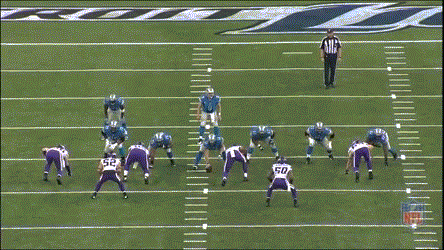
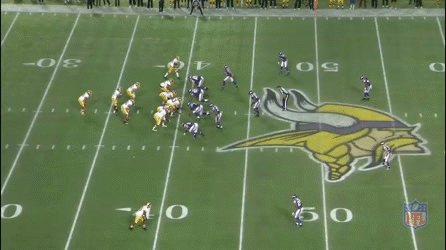
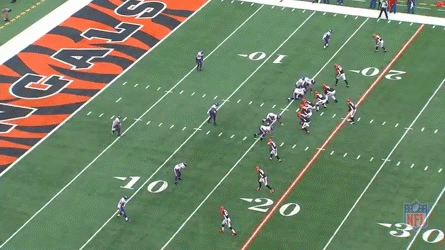
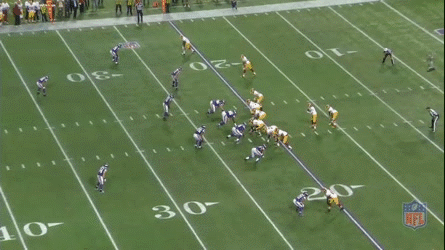
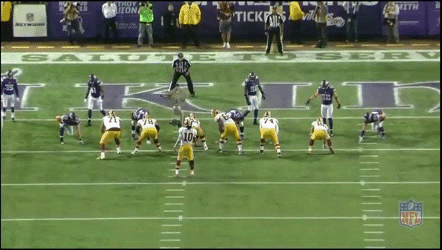
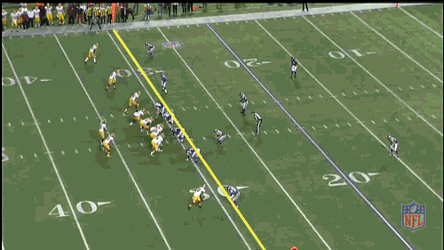
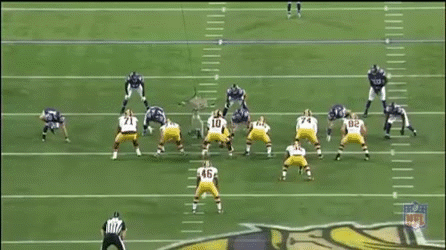
You must be logged in to post a comment.